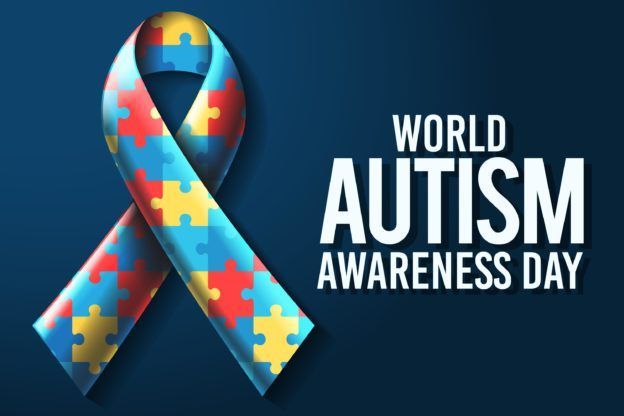World Autism Awareness Day: Understanding, Support, and Change
Introduction
World Autism Awareness Day, celebrated annually on April 2nd, serves as a powerful reminder of the importance of promoting awareness, understanding, and acceptance of people with autism spectrum disorder (ASD). This day is more than just a commemoration; it is a global call to action to address the challenges faced by individuals on the autism spectrum, their families, and communities.
Through education, support, and advocacy, World Autism Awareness Day aims to break down barriers and create a more inclusive world for those living with autism. This observance is vital not only to raise awareness but to celebrate the unique talents, strengths, and contributions of individuals with autism.
What is World Autism Awareness Day?
World Autism Awareness Day was declared by the United Nations General Assembly in 2007, and the first official observance took place in 2008. The goal of the day is to highlight the need for a better understanding of autism and the importance of supporting individuals with ASD. Autism is a lifelong developmental disorder that affects social interaction, communication, and behavior. It is characterized by a broad range of symptoms and abilities, meaning no two people with autism experience it in the same way.
On this day, people across the world come together to raise awareness about autism, promote research, and support individuals and families affected by autism. By increasing public knowledge and understanding, the observance works to reduce stigma and encourage greater acceptance of those on the spectrum.
History and Significance of World Autism Awareness Day
The United Nations’ declaration of World Autism Awareness Day came after growing recognition of the global prevalence of autism. It is estimated that 1 in 100 people are affected by autism worldwide, and the number is growing due to improvements in diagnosis and greater awareness.
The observance of World Autism Awareness Day has gained momentum over the years, becoming an opportunity for communities, schools, organizations, and governments to come together and focus on issues that affect individuals with autism. As the day has evolved, so too has its reach, with events, campaigns, and educational programs being launched globally. The ultimate aim is to create a society that is informed, accepting, and supportive of people with autism.
Key Facts About World Autism Awareness Day
- Date of Observance: World Autism Awareness Day is observed on April 2nd each year. The day is recognized internationally, with events taking place across the globe.
- Theme of the Year: Every year, a theme is chosen to guide the observance of the day. These themes often focus on specific aspects of autism awareness, such as inclusion, education, or acceptance.
- Autism Spectrum Disorder (ASD): Autism is a spectrum, meaning it can manifest in a variety of ways. Some individuals may have high-functioning autism and excel academically or socially, while others may need more support in everyday activities.
- Global Participation: The observance is not limited to just one country or community. People from all over the world participate in raising awareness, from organizing educational seminars to hosting fundraising events for autism research.
- The Light It Up Blue Campaign: One of the most well-known aspects of World Autism Awareness Day is the “Light It Up Blue” campaign, where buildings, landmarks, and homes are illuminated with blue lights to symbolize awareness and support for individuals with autism.
Why is World Autism Awareness Day Important?
1. Promoting Understanding
Many people are unaware of the challenges faced by individuals with autism and their families. Through events, campaigns, and education, World Autism Awareness Day helps bridge the gap between the autism community and the general public. By promoting understanding, the day encourages more empathy and tolerance, reducing the stigma often associated with autism.
2. Supporting Individuals with Autism
The day is an opportunity to emphasize the importance of providing support to individuals with autism. This includes access to specialized educational programs, employment opportunities, and social services. It’s also about advocating for inclusive education, ensuring that children with autism can learn alongside their peers in an environment that meets their unique needs.
3. Empowering Families
Autism affects not only the individual but also their family members. World Autism Awareness Day raises awareness about the challenges that families face, including the financial and emotional toll of caring for a loved one with autism. The day is an occasion to celebrate the resilience of these families and advocate for services and policies that can make their lives easier.
4. Driving Research and Innovation
World Autism Awareness Day also encourages continued research into the causes of autism, better diagnostic methods, and more effective therapies. Increased funding and attention to autism research are essential in advancing treatments and improving the quality of life for those with autism.
5. Building an Inclusive Society
Ultimately, World Autism Awareness Day is about creating a society where people with autism are treated with dignity and respect. It’s about ensuring that individuals with autism have the same opportunities as anyone else to lead fulfilling, independent lives. The observance calls on governments, institutions, and communities to work together toward inclusion and equality.
Impact of World Autism Awareness Day on Daily Life
World Autism Awareness Day has a profound impact on the daily lives of individuals with autism, their families, and society at large. The observance serves as a reminder that autism is not a one-size-fits-all condition and that each individual has unique needs. Increased awareness leads to more resources being allocated to support families, enhance educational opportunities, and improve community integration.
The day also helps raise awareness in workplaces, encouraging companies to offer accommodations for employees with autism, fostering an environment where everyone can thrive. Schools are more likely to implement inclusive programs, and healthcare providers are more attuned to the needs of patients with autism.
How You Can Participate in World Autism Awareness Day
There are many ways that individuals and organizations can participate in World Autism Awareness Day:
- Wear Blue: Many people wear blue clothing to show their support for autism awareness. It’s a simple way to participate and help spread the message.
- Light It Up Blue: Illuminate buildings, landmarks, and homes with blue lights to symbolize autism awareness.
- Share Information: Share facts, stories, and personal experiences about autism on social media to increase awareness.
- Support Charities: Donate to organizations that provide services and research for autism, or volunteer your time to support local autism groups.
- Attend Events: Many communities host events like seminars, fundraisers, and social gatherings to raise awareness and build a sense of unity among those affected by autism.
Conclusion
World Autism Awareness Day is a day of hope, education, and unity. By participating in the day’s activities and promoting awareness, we can work together to create a world that recognizes and values the contributions of individuals with autism. Whether through supporting research, advocating for inclusion, or simply learning more about autism, everyone can play a role in making a positive difference in the lives of those with autism.
With greater awareness, understanding, and support, we can help pave the way for a future where individuals with autism can lead fulfilling lives and contribute to society in meaningful ways.










